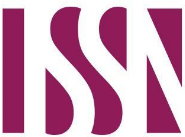Microbiological Evaluation and Chemical Analysis of Potable Water in Al-Jabal Al-Akhdar
الكلمات المفتاحية:
drinking water,، heterotrophic plate count,، total coliforms,، fecal coliforms,، chemical parametersالملخص
This study was conducted to evaluate the microbiological and chemical safety of drinking water by using some chemical parameters and microbiological tests such as heterotrophic plate count, total coliforms and fecal coliforms
In this study 14 samples were obtained from three sources [water purification stations (S), water bottling system (BO) and water local purification system (L)] from different locations in Aljabel Alakhdar [Susah (S), Derna (D), Shahat (SH), Albayda (B), Po Traba (T), Alhamama (H) and Almarj (J)].
The obtained microbiological examination results were: water purification stations samples shown highest hetrotrophic plate count (total count) among all other samples sources, their total counts were 716 cfu/100ml by ST sample followed by sample SD (668 cfu/100ml) then SS sample (616 cfu/100ml). The other two sources showed large variations in their total counts. The water bottling system samples total counts were 430 cfu/100ml (BO5) and 393 cfu/100ml (BO4), while samples BO3, B01 and B02 exhibited lowest counts 73, 72 and 65 cfu/100ml respectively. On the other hand the water local purification system samples total count were ordered as follow: LB1(503 cfu/100ml), LB2 (397 cfu/100ml), LSH (379 cfu/100ml), LH (295 cfu/100ml), LB3 (257 cfu/100ml) and LJ (87 cfu/100ml).
The total coliform test which included the presumptive , confirmative and completed tests. All samples were contained total colilform, eight samples (SD, BO2, BO3, BO4, LJ, LB1, LB2 and LSH) showed positive confirmative test and these eight samples were also confirmed presence of fecal coli form.
The chemical parameters result showed that the highest total dissolved solids (TDS) of water samples obtained was (138.5 mg/L) by LB3, while the lowest was (6 mg/L) by sample LJ. The measured pH of the samples were ranged between 7.32 and 7.00, except LJ which measured 6.2. The potassium concentrations 9 – 2 mg /L. The sodium concentrations ranged between 5 - 1 mg/L. The calcium concentration varied from 90 to 2 mg /L. The conductivity of the water samples showed large variationo ranged between 259.7 and 24.3 µs.
The study revealed that there was fecal coli form pollution in some investigated water sources and this may leads to serious health risk.
المراجع
REFERENCES
- WHO (World Health Organization) (2003). Guidelines for Drinking Water Quality, Geneva, Switzerland, 3rd edition, pp. 81-87.
- Miner CA, Dakhin AP, Zoakah Al, Zaman M, Bimba J (2016). Physical and Microbiological Quality of Drinking Water Sources in Gwafan Community, Plateau State, Nigeria. Pyrex J. Res. Environ. Stud. 3(1):001-006
- Abera, S.; Zeyinuidin, A.; Kebede, B.; Deribew, A.; Ali, S.; Zemene, E., (2011). Bacteriological analysis of drinking water source. Afr. J. Microbiol. Res., 5 (18), 2638-2641.
- Chigbu, P., Gordon, S., and Strange, T. (2005). Fecal coliform bacteria disappearance rates in a north-central Gulf of Mexico estuary. Estuar. Coast. Shelf Sci. 65: 309–318
- Borrego, J.J., Cornax, R., Morinigo, M.A., Martinez-Manzares, E., and Romero, P. (1990). Coliphages as an indicator of fecal pollution in water. Their survival and productive infectivity in natural aquatic environments. Water Res. 24: 111–116.
- Bitton, G. (2005). Microbial indicators of fecal contamination: application to microbial source tracking. Report Submitted to the Florida Stormwater Association, 71pp
- Leonard, D.L. (2001). National indicator study: is an international approach feasible? J. Shellfish Res. 20: 1293–1298.
- Stevens, M., Ashbolt, N., and Cunliffe, D. (2003). Recommendations to change the use of coliforms as microbial indicators of drinking water quality. National Health and Medical Research Council, Australian Government. 42pp
- WHO (1996). Guidelines for Drinking Water Quality (Health Criteria and Other Supporting Information, Vol. 2), 2nd ed., World Health Organization, Geneva
- Neufeld, N. (1984). Procedures for the bacteriological examination of seawater and shellfish. In: A.E. Greenberg and D.A. Hunt (Eds.), Laboratory Procedures for the Examination of Seawater and Shellfish, 5th ed. American Public Health Association, Washington, DC
- Reasoner, D.J. (2004). Heterotrophic plate count methodology in the United States. Int. J. Food Microbiol. 92: 307–315.
- Koster, W., Egli, T., Ashbolt, N., Botzenhart, K., Burlion, N., Endo, T., Grimont, P., Guillot, E., Mabilat, C., Newport, L., Niemi, M., Payment, P., Prescott, A., Renaud, P., and Rust, A. (2003). Analytical methods for microbiological water quality testing. In: A. Dufour, M. Snozzi, W. Koster, J. Bartram, E. Ronchi, and L. Fewtrell (Eds.), Assessing Microbial Safety of Drinking Water-Improving Approaches and Methods. IWA Publishing, London, 304pp.
- American Public Health Association (APHA) (1998). Standard Methods for the Examination of Water and Wastewater, 20th ed., APHA, Washington, DC.
- ISO 1990 Water Quality C Detection and Enumeration of Coliform Organisms , Thermotolerant Coliform Organisms and Presumptive E. coli. Part 1:Membrane filtration Method. International Standard ISO 9308-1, International Organization for Standardization, Geneva.
- Michiels, C.W. and Moyson, E.L.D. (2000). Bacteriological analysis. In: L.M.L. Nollet (Ed.), Handbook of Water Analysis. Marcel Dekker, New York, pp. 115–141
- Wagner, M., Amann, R., Lemmer, H., and Schleifer, K.H. (1993). Probing activated sludge with oligonucleotide specific for proteobacteria: inadequacy of culture-dependent methods for describing microbial community structure. Appl. Environ. Microbiol. 59: 1520–1525.
- WHO, (2006), "Guidelines for drinking water quality" Geneva, Report No: WHO/SDE/WSH 06.07.
- WHO, (2003), "Guidelines for drinking water quality", Geneva, Report No: WHO/SDE/WSH 03.04.
- APHA , AWWA, WEF, 1995. Standard Methods for the Examination of Water and Waste Water {19th edition }. Washington , D.C:. American Public Health Association .













